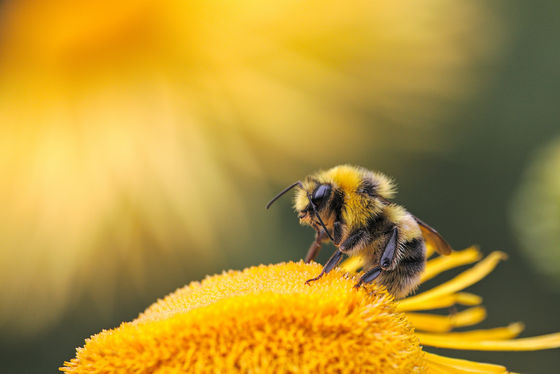Research reveals that bees enjoy playing with rolling wooden balls

It is known that many animals enjoy '
Do bumble bees play? - ScienceDirect
https://www.sciencedirect.com/science/article/pii/S0003347222002366
Bees like to roll little wooden balls as a form of play, study finds | Ars Technica
https://arstechnica.com/science/2022/12/bees-like-to-roll-little-wooden-balls-as-a-form-of-play-study-finds/
The act of play can usually be roughly classified into three categories. The first is “social play,” which involves playful interactions between animals. The second is 'exercise play', which is an intense and sustained movement that is not associated with a specific purpose, such as running or jumping. The third is “playing with things,” which means playing with things as toys.
A study published in 2017 showed that it is possible to train bees to roll a small wooden ball to receive a reward (food). In this study, a wooden ball was placed over the tunnel connecting the experimental site where the food was placed and the hive where the bees lived. is observed.
It was also observed that bees sometimes roll the ball even when there is no apparent reward or benefit. Therefore, Lars Chittaka, a biobehavioral scientist at the University of London, Queen Mary, who participated in the study, and others conducted a study to verify ``whether the act of rolling a wooden ball by honeybees is a genuine play behavior.'' It seems that the investigation has started.

Designing experiments to demonstrate that organisms engage in play behavior is extremely difficult. Since it is not possible to ask the creature whether it enjoys the action, basically it seems that it has been demonstrated that the creature enjoys playing when it meets the five criteria.
The five criteria are as follows.
1: Not an action to get food, attract a spouse or find shelter
2: It is an action that is spontaneous and rewarding in itself, not associated with any reward
3: Play behavior is different from behavior performed when searching for food or trying to mate
4: To distinguish between one-time events and habitual behavior, play behavior should be repeated, but play is not stereotyped
5: Play 'should be initiated when the subject is relaxed' to distinguish it from stress-related behaviors such as pacing and walking that are common in caged zoo animals.
Based on these criteria, the research team conducted experiments using 45 bees. In the experiment, a feeding area and a nest box were prepared separately, and the two were connected by two passages. One aisle was empty and the other had colored wooden balls. As a result of the experiment, it seems that 37 out of 45 bees rolled the ball even after eating the food. It was also observed that individual bees rolled the ball from 1 to 117 times during the experiment.
To determine if this applies to play, the research team is conducting a second experiment. In this experiment, we prepared another 42 bees that did not participate in the first experiment, a room with no balls and a room with balls. The two rooms were clearly color-coded, and after some time the balls were removed. It turned out that the bees strongly preferred the color of the room in which the ball was placed.
A third experiment also revealed that young bees roll the ball more frequently than older bees, and male bees tend to roll the ball longer than female bees.

From these experiments, the research team concludes that ``bees play by rolling wooden balls,'' assuming that bees meet the five criteria for play behavior. ``The results of this study strongly indicate that the minds of insects are much more sophisticated than we imagine,'' said the research team, saying that this study will be an opportunity to change the perception of insects. I was.
Related Posts:






